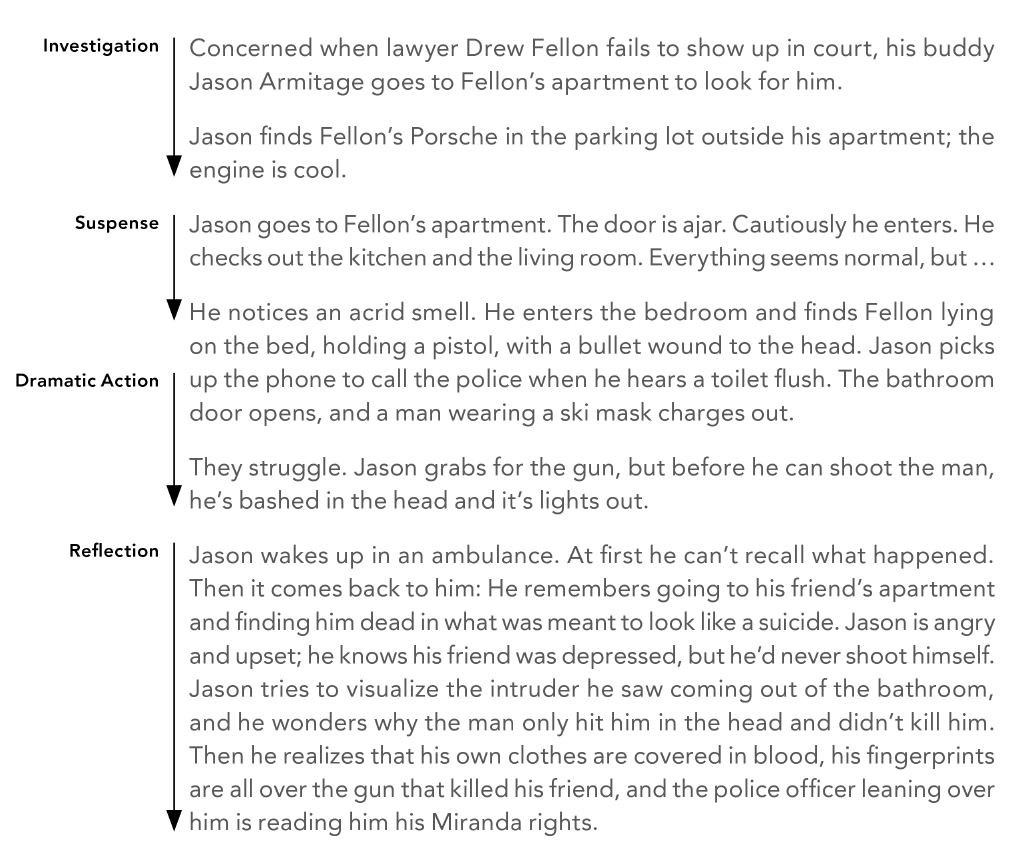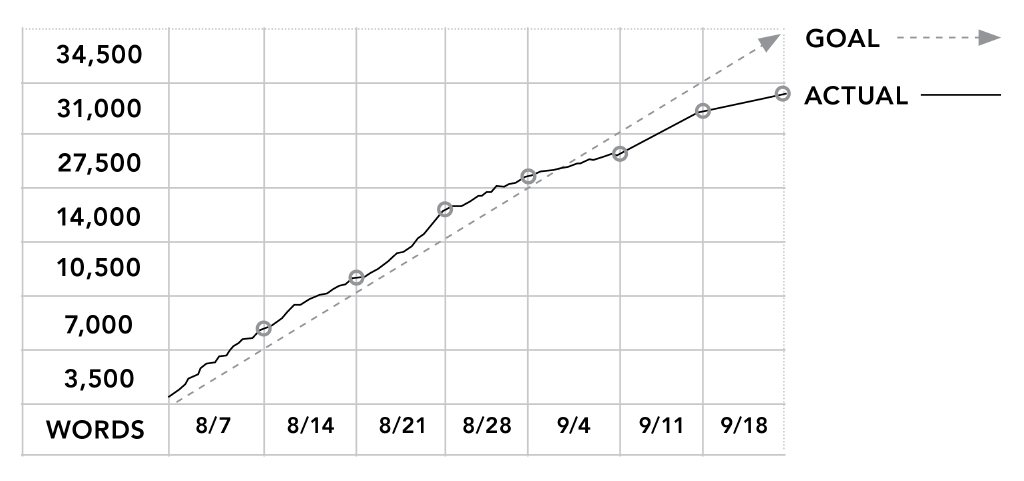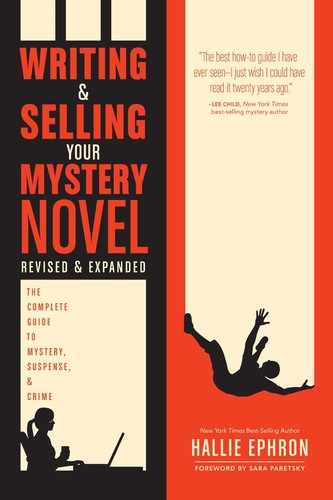Part II
Writing
“For me and most of the other writers I know, writing is not rapturous. In fact, the only way I can get anything written at all is to write really, really shitty first drafts.”
—Anne Lamott, Bird by Bird: Some Instructions on Writing and Life
You’ve spent tons of energy and done a bang-up job researching and planning. Now you’re ready to start writing the first draft.
At its most elementary, you’ll be writing scenes that combine description, movement, dialogue, and internal dialogue to create these basic mystery novel components:
- Investigation: actions such as questioning suspects, examining the crime scene, going on stakeouts, doing searches, and so on
- Suspense: rising tension and potential danger as the investigation continues; anticipation builds with the feeling that something is going to happen
- Dramatic action: physical drama such as a car chase, a gunfight, or an assault
- Reflection: thoughts of what just happened and the review of clues and red herrings, then a moment of realization as a lightbulb goes off in the character’s (and the reader’s) head, and the story is propelled forward
To see how these elements work together, read the three-scene synopsis that follows.

Generally speaking, a mystery novel unfolds in waves of investigation, suspense, action, and reflection.
More investigation occurs earlier in the novel; toward the end there’s more suspense and action. A well-paced novel takes time to develop characters and create a sense of place up front, all the while moving the story forward.
GETTING IT DOWN
Writing a first draft is like knitting a very long scarf. Your blueprint, outline, and synopsis provide a pattern to follow. Start at the beginning. Write scene one, and then write scene two. Keep at it, carrying along and interweaving the threads of subplots while you build the main story, varying the pattern and improvising as inspiration strikes. Sooner or later, you’ve inched your way to the end.
If it suits you, keep track of your progress and set a daily goal. I do because I’m anal and like to measure my progress. And also because I usually have a deadline, either self-imposed or set by my publisher. My goal is generally to write 500 new words a day, and I like to keep track of how far ahead or behind I am at reaching my ultimate goal.
Here’s a portion of the chart I use to track my first-draft progress. The chart extends to 80,000 words over twenty-three weeks. I usually fall behind, but charting my day-to-day output gives me a realistic idea of when I’ll actually reach the finish line.

For me, writing the first draft is excruciating. I can plan to beat the band, research for hours on end, revise ’til the cows come home, but writing that first draft—every sentence, every page, feels like I’m pushing wood through a meat grinder. I read my e-mails or play solitaire to avoid writing. I’ll even do laundry or balance my checkbook rather than write. Mystery author Kate Flora suggests hanging a sign inside your office door that says KEEP OUT. I tried it, but it didn’t work.
I have found that it helps if I give myself permission to drop stitches. Writing a bad first draft is not only acceptable; it’s expected. So silence your inner critic and nail down that first draft. If it’s rife with highfalutin metaphors, arcane vocabulary, and long descriptive passages, you can cut and simplify later. If your writing is skeletal, more movie script than novel, don’t worry about that either. You’ll layer on nuance, character, and description when you revise.
Some writers start writing the first scene and go full-steam ahead, writing scene after scene, straight through to the end. But for the rest of us, writing is three steps forward, two steps back.
Every morning when I sit down to work, the first thing I do is reread and revise the scene I wrote the day before. Sometimes I revise an even larger chunk before writing new material. This is good—but only to a point. Have you heard that old saying, “Great is the enemy of good”? Well, “great” is also the enemy of “finished.” And you’ve got to finish the first draft so you can get on to the revisions that will make it shine.
MANUSCRIPT LENGTH
There are no hard-and-fast rules, but generally speaking, a publisher expects a manuscript for a mystery novel to be somewhere between 70,000 and 100,000 words. Using 12-point Times New Roman font, double-spacing, and inch-wide margins, that’s about 250 to 400 pages.
If your manuscript is more than 450 pages, an editor will be more reluctant to consider it. A 150-page manuscript, even when it’s an entertaining cozy mystery, probably won’t make it out of the slush pile either.
